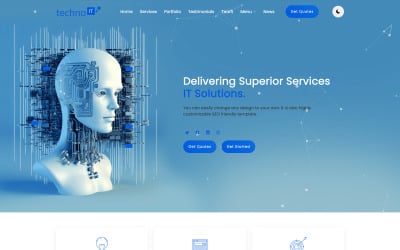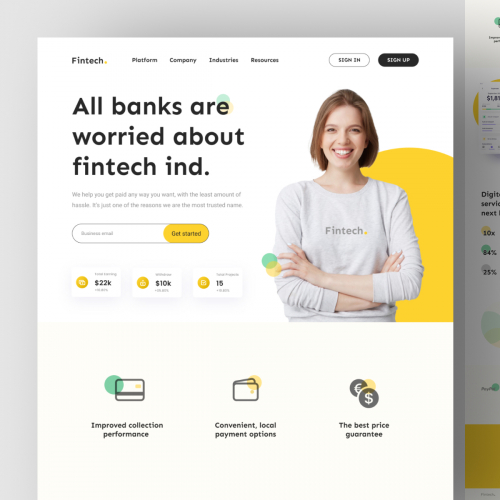Budget-Friendly Website Design Solutions for Medium Businesses
Budget-Friendly Website Design Solutions for Medium Businesses
Blog Article
Top Tips for Creating an Impactful Internet Site Layout That Converts
In today's digital landscape, the importance of an impactful web site layout can not be overemphasized, specifically when it pertains to transforming site visitors right into consumers. To attain this, one must think about a range of elements, including comprehending the target market, focusing on individual experience, and maximizing for mobile systems. The tactical use of engaging call-to-actions and a well-defined visual hierarchy plays an important role in leading individuals through their journey. As we check out these vital components, it comes to be obvious that the success of your site rests on greater than simply aesthetics; it calls for a thoughtful approach to style and performance.

Understand Your Target Market
Understanding your target market is basic to efficient website style, as it prepares for producing an engaging customer experience. Identifying that your users are, including their demographics, choices, and habits, makes it possible for developers to customize the web site's content, design, and capability to satisfy particular demands.
Carrying out comprehensive marketing research is important in this process. Surveys, meetings, and analytics can offer useful insights right into user expectations and discomfort points. By assembling this data, designers can develop customer personas that represent various segments of the target market, guaranteeing that style choices are notified and pertinent.
Moreover, comprehending the target audience aids in selecting suitable style components such as color schemes, typography, and imagery that reverberate with customers. A site that talks straight to its target market fosters a sense of connection and trust, motivating longer visits and higher conversion rates.
Eventually, a user-centered strategy to internet site design not only improves customer complete satisfaction yet additionally sustains business objectives by driving interaction and loyalty. By prioritizing the requirements and choices of the target market, an internet site can effectively serve its purpose and achieve preferred results.
Prioritize Individual Experience
To improve the general efficiency of a web site, focusing on customer experience (UX) is crucial (Website Design). A properly designed UX ensures that visitors can browse the website easily, discover info swiftly, and involve with content meaningfully. This results in raised user contentment and greater conversion rates
Begin by implementing instinctive navigating. Menus must be rationally structured, enabling individuals to locate vital locations of the website with very little effort. Uniformity in style elements, such as color design and font styles, promotes familiarity, which is essential for maintaining customer interaction.
Additionally, take into consideration the packing speed of your internet site. A hold-up of simply a few secs can cause considerable drop-offs, as users are much less likely to await a slow-loading page. Simplifying photos and enhancing code can boost performance and retain site visitors.
By prioritizing user experience, you not only produce an extra pleasurable environment for visitors but additionally reinforce your brand name's reliability. Eventually, a focus on UX is an investment in the long-lasting success of your web site.
Maximize for Mobile Instruments
Maximizing for smart phones is essential in today's digital landscape, where an enhancing number of users accessibility web sites via smartphones and tablets. A mobile-friendly design not just boosts user experience yet likewise plays a substantial duty in boosting online search engine positions. To accomplish this, it is important to take on a receptive style that immediately gets used to various her latest blog screen dimensions and alignments.

Filling speed is an additional crucial factor; mobile users are commonly less patient and anticipate quick access to details. Enhance images and leverage internet browser caching to enhance efficiency. Ultimately, test your site on multiple gadgets and screen resolutions to determine and correct any kind of potential use issues. By prioritizing mobile optimization, you guarantee that your website stays competitive and successfully engages a wider audience.
Usage Engaging Call-to-Actions
A site's performance often depends upon its capability to lead visitors toward desired actions, making compelling call-to-actions (CTAs) important elements of layout. CTAs function as the pivotal points that guide individuals to involve with the website, whether that means making an acquisition, enrolling in a newsletter, or downloading a resource.
To create effective CTAs, clarity is critical. Usage concise language that clearly connects the activity you desire the individual to take. Phrases such as "Get going," "Join Free," or "Shop Now" not just convey urgency but also eliminate ambiguity. The placement of CTAs is equally important; they click now should be strategically positioned throughout the website to ensure they are easily visible, specifically in high-traffic locations.
Moreover, the layout of CTAs need to stand out without being interfering. Use contrasting colors and clear fonts to ensure they capture focus. Furthermore, think about using directional signs, such as arrowheads or images, to guide customers toward these switches. By concentrating on these aspects, services can dramatically improve user involvement, driving conversions and eventually achieving their internet site's goals.
Concentrate On Visual Hierarchy
Efficient website style counts greatly on a well-structured aesthetic hierarchy that guides individuals via material flawlessly. By organizing components in a way that prioritizes info, developers can improve customer experience and facilitate decision-making. This entails utilizing dimension, shade, contrast, and spacing purposefully to attract attention to one of the most crucial elements of a page.
Using larger typefaces for headings and subheadings develops a clear distinction in between various areas, allowing individuals to check material easily. Additionally, utilizing different shades for switches and calls-to-action can capture individual interest and urge communication. Whitespace is an additional important element; it protects against mess and makes it possible for users to concentrate on crucial messages without distractions.
Images and graphics ought to match the text while likewise adhering to the well established power structure, enhancing the total message (Website Design). Consistency in design elements, such as color schemes and typography, further read the article strengthens the visual hierarchy, making navigation intuitive

Verdict
In conclusion, efficient site design necessitates a comprehensive understanding of the target market, prioritization of customer experience, and mobile optimization. The calculated use of compelling call-to-actions and a well-defined aesthetic pecking order further boosts customer interaction. By executing these principles, internet sites can attain higher conversion rates, ensuring that layout aspects not only attract site visitors however likewise facilitate smooth navigation and communication. Eventually, a well-executed site layout acts as an important element in driving user activities and accomplishing business purposes.
Report this page